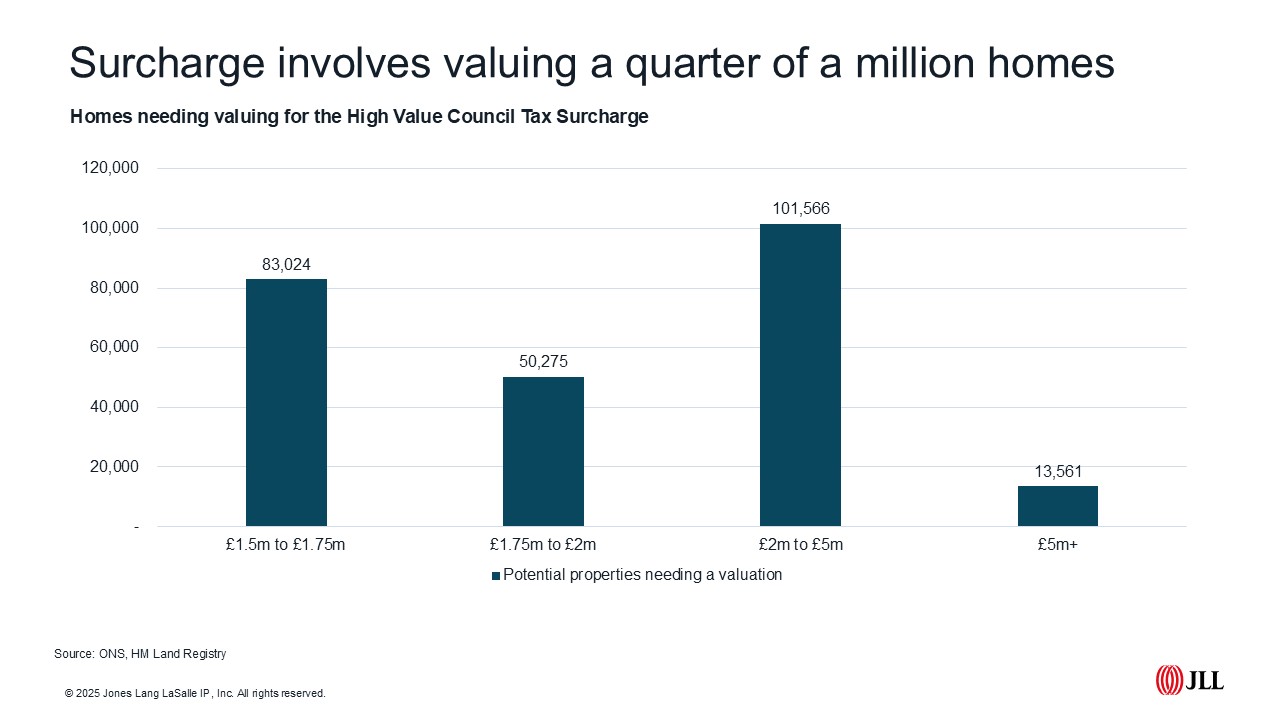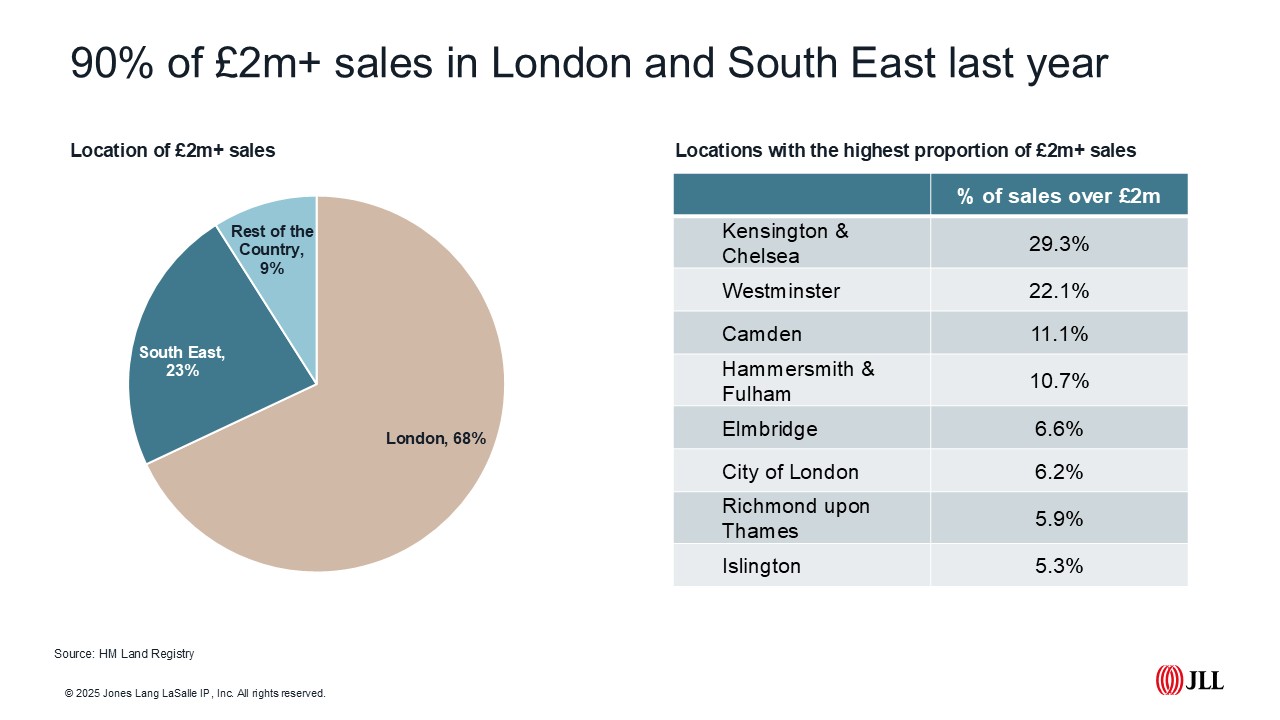This was always going to be a balancing act Budget, attempting to keep the party, markets (read bond yields) and the electorate happy. There were some clear concessions to Labour backbenchers, including the abolition of the two-child benefit cap, but it was clear – even before the Budget began thanks to the OBR - that this would be a Budget of multiple small changes rather than a handful of wide-ranging (but manifesto busting) hikes to income tax or VAT.
Confidence returns
The property industry was not alone in needing clarity after months of speculation that had slowed activity. Simply knowing what would and wouldn't change should provide hesitant buyers and sellers with some confidence to re-enter the market.
For the housing market, there were clear (and missed) chances to go further in supporting transactions and unlocking much-needed development. Reforming taxes such as stamp duty, which continues to hold up the market by discouraging people from moving, would have made a meaningful difference. Targeted support at the entry level would have made a far greater difference to market mobility, particularly with the OBR acknowledging they expect further falls in housing net additions through to 2027.
However, bond markets have reacted positively, suggesting yields may fall further, creating opportunities for rate cuts. While we didn't see demand-side stimulus, we could still see a rise in activity through more competitive debt costs next year.
OBR forecasts
The OBR is expecting UK GDP to rise 1.5 per cent this year, up from the 1 per cent forecast in the Spring. House prices growth is expected to broadly track nominal earning growth over the forecast period, rising from £260,000 in 2024 to £305,000 in 2030. Transactions are expected to rise to around 1.3 million by 2029, up from 1.1 million in 2024, but down by more than 155,000 per annum on the March forecast.
Key changes for housing
With so much kite flying pre-Budget, clarity around what changes might be introduced for our sector was much welcome. Rumours of changes to or the removal of Stamp Duty or wide-ranging council tax revaluation were notable in their absence. Overall, we could have seen more damaging policies introduced, particularly those impacting the top end of the market, but similarly there was little in the Budget which looked set to dramatically change the trajectory of the market. So, what’s changing?
Tax rates for income from rental properties
From April 2027, property income tax rates will increase by two percentage points. Basic rate taxpayers will pay 22%, higher rate 42%, and additional rate 47%. Note that landlords owning properties through limited companies face different rates.
These increases risk worsening the supply-demand imbalance in private rental markets. Smaller landlords, already pressured by higher taxes and changing regulations, may choose to exit rather than absorb additional costs—reducing supply and potentially increasing rents.
High Value Council Tax Surcharge

A new surcharge of between £2,500 and £7,500 per annum from 2028 is perhaps the least painful of the mansion tax proposals mooted in the run-up to the Budget but still targets a sector of the market which has seen continued hikes in taxations
and stagnation in prices over the past decade. While it may cause some existing homeowners to consider downsizing the likelihood of it making a significant difference to buyers’ behaviour are limited.
Key details
- Expected to raise around £430 million per year (Council Tax revenues top £40 billion)
- Takes effect in April 2028 and based on the value of properties in 2026.
- A public consultation on the details relating to the surcharge, including reliefs and exemptions is planned for early next year.
- Homeowners, not tenants, will be liable for the surcharge (different from Council Tax which is payable by the occupier).
- The Valuation Office will conduct a targeted valuation to identify properties above £2 million, with revaluations conducted every five years.
- Revenue will be collected alongside Council Tax but will go directly into central government coffers.

The impact falls disproportionately on London and the South East, which accounted for 90% of £2 million plus sales last year. Previous mansion tax proposals in 2014 aimed to raise £1.2 billion through similar measures, averaging £11,000 per property annually—nearly three times the current HVCTS rate.
It is also worth noting that London boroughs with some of the highest proportion of £2 million plus homes also have some of the lowest council tax. A £2 million Wandsworth property owner facing the additional £2,500 charge currently pays £1,210 annually in Band E council tax. Compare this to a Band E home in Nottingham—likely below the HVCTS threshold—where owners pay £3,246 in council tax. The total bill difference narrows to just £464.
Other things to watch
- Early 2026 consultation on replacing the Lifetime ISA with a simpler product—particularly relevant to London given the £450,000 limit.
- Consultation on potential changes to VAT rules for land intended for social housing.
- Warm Homes Plan – an additional £1.5bn to help homeowners improve the energy efficiency of their properties.
- Roll back on potential changes to landfill tax – thankfully avoiding further costs for viability stretched developers.
Moving forward
With the Budget concluded and no major fiscal events planned for a year, greater certainty should help restart market activity. If markets continue responding positively, we could see rates drop more rapidly, easing debt cost burdens across the sector. But to fulfil the government’s ambition of building 1.5 million homes we’ll need to see more on increasing delivery, improving viability, and demonstrating clear and sustained demand for homes across all sectors of the UK housing market.
JLL Research
JLL’s Residential and Living team consists of over 300 professionals who provide a comprehensive end-to-end service across all residential property types, including social housing, private residential, build to rent, co-living, later living, healthcare and student housing.




